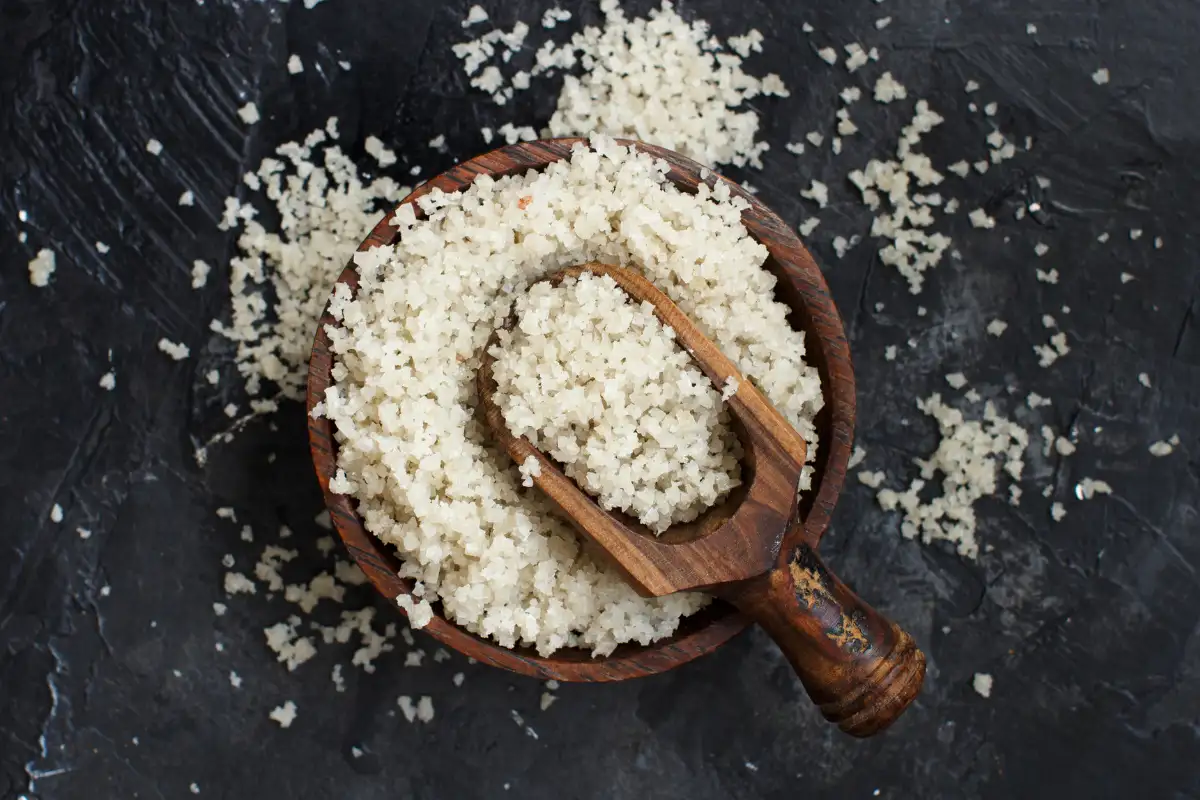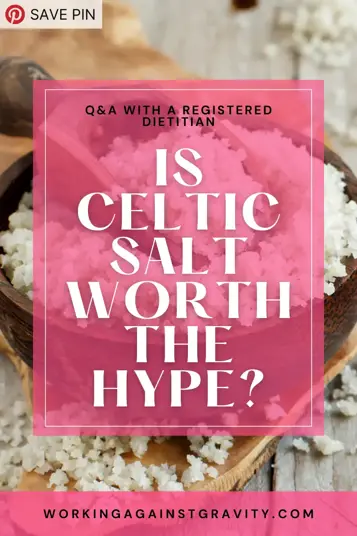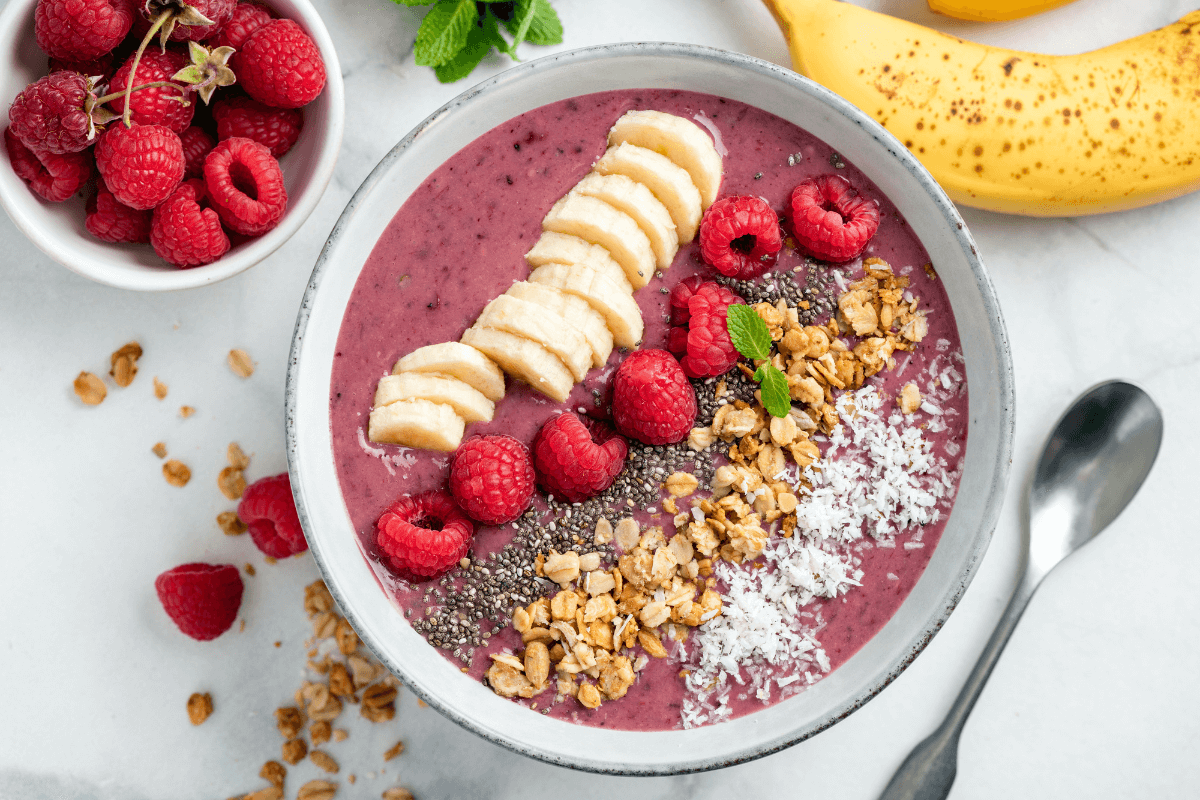
If you follow the latest trends in cooking (or if you’re anywhere on TikTok), you’ve probably heard of Celtic salt. But what is Celtic salt? Is Celtic salt good for you, and is it worth the hype? We asked one of our RDNs on staff to answer some common questions about Celtic salt. Here’s what Alex had to say.

What is Celtic Salt?
Can you give us some background on Celtic salt? Where is it from?
Alex: When you hear “Celtic,” you may think of Ireland and Scotland, but Celtic salt is actually mined from an area in France near the Celtic Sea. The mining process is very traditional: it is dried out using natural sunlight.
Why are people loving Celtic salt right now?
Alex: It is great for adding flavor to foods, and due to how it is processed, it contains a high concentration of minerals and no microplastics. Since it is a larger crystal size, it is a great “finishing” salt to add at the end of the cooking process.
You mentioned how Celtic salt is processed; can you explain more about that?
Alex: The mining process is very traditional: it is dried out using natural sunlight.
Advertisement
Does that mean there is an environmental impact component of choosing Celtic Salt?
Alex: Because Celtic salt is dried by the sun, it may have a better impact on the environment compared to other large sea-salt mining methods, which involve running water through the salt and drawing the water back out, leaving a salty brine that is discarded into ponds. Some species will benefit from this salty brine but may harm others.
What Makes Celtic Salt Unique?
What makes Celtic salt different than other salts?
Alex: Celtic salt is less processed than other salts (like table salt), which means there is a higher concentration of other trace minerals, including magnesium, calcium, and potassium (compared to some other salts like table salt).
Outside of mineral content, are there any other differences?
Alex: Celtic salt is gray in color and contains more moisture, which is noticeable when looking at or feeling the final cooked product.
What is the mineral content of Celtic salt?
Alex: Celtic salt is about 50% chloride, 32% sodium (that means it is 84% sodium chloride), 0.45% magnesium, and 0.13% potassium.
Advertisement
Is that different from the mineral content of other salt options?
Alex: Celtic salt contains less sodium chloride than table salt (480 mg vs 590 mg per ¼ tsp, respectively) and less sodium chloride than sea salt (480gm vs ~575 mg per ¼ tsp). So you don’t necessarily need to look for Celtic salt unless you enjoy the flavor and larger crystal size.
Why is Salt Important In Everyday Health?
What role does salt play in the body? Is it an important component of a healthy diet?
Alex: Salt is an essential mineral. Yes, essential. This means you must consume it daily—even if you follow a low-sodium diet. Sodium (or salt) plays an important role in facilitating muscle contractions. I’m not just talking about lifting weights but all muscles, such as your heart and other organs. It also helps with nerve functioning.
Are there any health benefits specific to Celtic salt?
Alex: Celtic salt does contain the essential mineral sodium, which helps with electrolyte balance. However, it isn’t loaded with other essential trace minerals (potassium, magnesium, etc). To consume more trace minerals, seek better sources like fruits and vegetables.
Can Celtic salt really help me drink more water?
Alex: Celtic salt may help you drink more water since the salt addition may help with taste. You don’t need to add too much salt to the water, maybe a pinch! But this recommendation depends on the rest of your diet, and there are many other ways to drink more water. If you consume many packaged foods, you likely consume plenty of salt.
Advertisement
Choosing the Right Celtic Salt
Are there different varieties of Celtic salt?
Alex: Celtic salt comes in its original (course) variety, fine ground, and flaky (which is skimmed from the top of the brine, which means it is a smaller and more delicate product). There are also varieties for animal and body use (think pet supplements or skincare products). There are also different hues (white, gray, or even light pink) but that doesn’t mean there is a different compound structure, just a difference in where it was sourced.
What quality indicators should I look for when buying Celtic salt?
Alex: Look at the ingredient list to check for fillers, additives, chemicals, and anti-caking agents. The only ingredient should be Celtic salt.
Where can I buy authentic Celtic salt?
Alex: You can find Celtic salt at the grocery store and online. It is best to look up the specific brand's website for information like history of excellence, certifications of purity, and customer reviews. If you can’t find any information on the brand, that is your sign to go with a different product.
Advertisement
The TLDR on Celtic Salt
So, Is Celtic salt worth the hype?
Alex: Not health-wise—but it is a good option if you like finishing salt and a moist product.
Are there any other considerations or things you’d like readers to know about Celtic salt?
Alex: Keep tabs on your overall sodium consumption. If you follow a diet filled with whole food sources, cook at home, and rarely salt your food, then you may benefit from adding a salt product like Celtic salt. However, if you eat out, enjoy packaged/processed foods, and already salt your food, you don’t need to buy this product!
There you have it! Alex’s input on Celtic salt. Any other questions? Drop them below or subscribe to our newsletter and ask us there—every week, we share nutrition tips, our take on the latest research or nutrition trends, and so much more.
Schedule a Free Intro Call
Working Against Gravity has led the macro tracking and health space for over a decade. Our team doesn’t just understand the science of nutrition—we’ve spent years mastering the art of tailoring it to fit your life. That means no cookie-cutter plans, just real strategies that have worked for over 30,000 people.
Schedule a free call with our team to learn how working with a 1-on-1 WAG coach will help you reach your goals.



